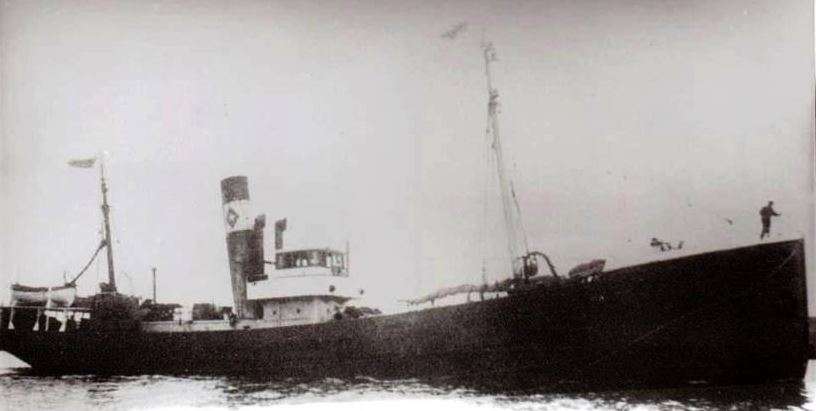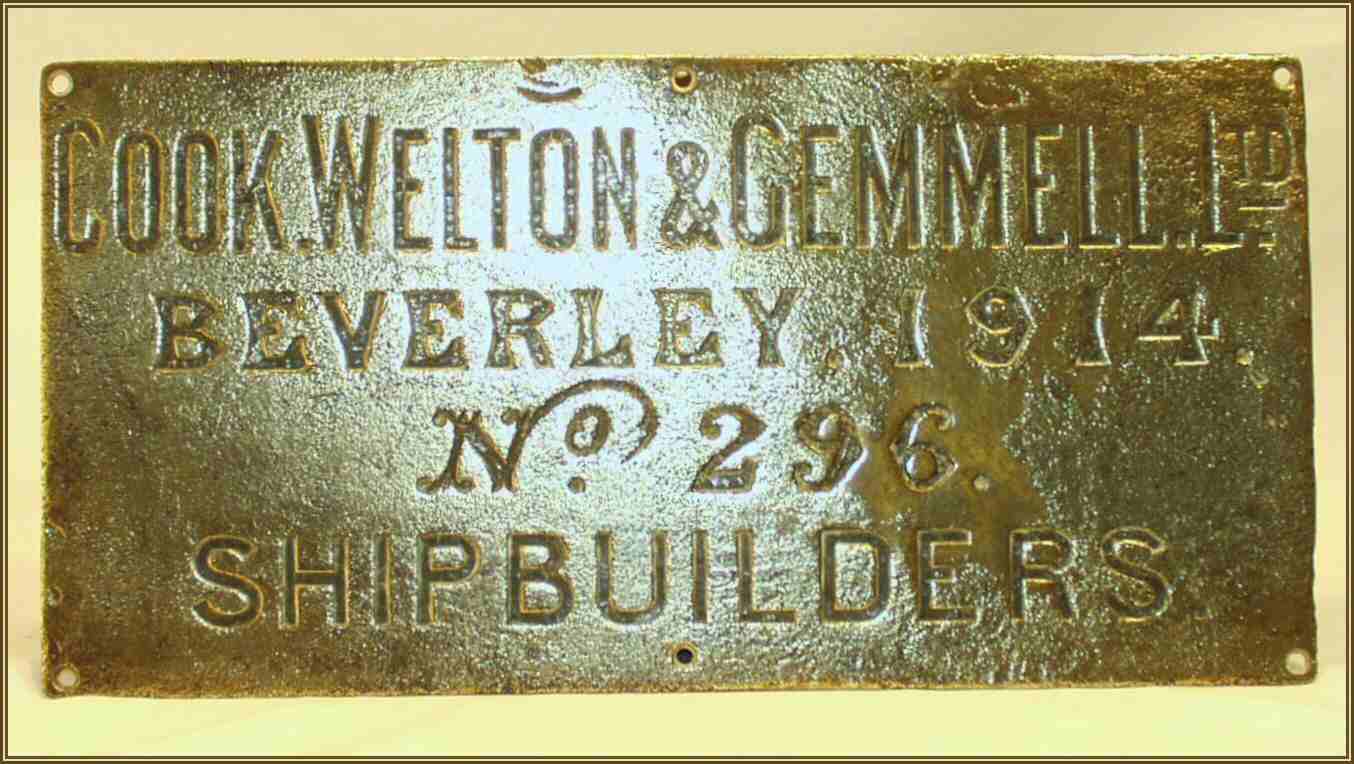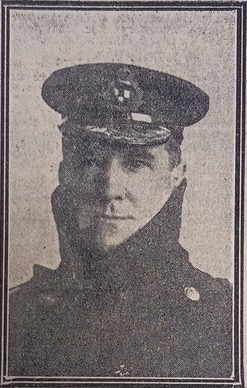Another Minesweeper Destroyed, The Banyers, Wednesday 6 January 1915
It is claimed that within a month of the laying of the minefield that minesweepers had cleared fifty-three of the one hundred mines laid by the Kolberg. The lessening in the number of sinking is testament to the dangerous and arduous work, often undertaken by fishermen who manned their trawlers, which had been converted to minesweepers. Perhaps it was unsurprising that the first vicim of the New Year was a commissioned Grimsby trawler, HMT Banyers. On board the minesweeper was Lieutenant Hubert Boothby, who was sunk in December whilst in command of the minesweeper Orianda.
The group was minesweeping in Cayton Bay when the Banyers struck a mine. Two crewmen were killed as the Banyers sank in the space of a few minutes. Boothby escaped through the wheel-house window. Lieutenant Boothby was in the water for twenty minutes before being picked up, along with eleven survivors. The Admiralty recognised the leadership shown by Lieutenant Boothby while both leading the minesweeping operations and for his conduct in both sinkings, he was awarded the Distinguished Service Order. Boothby was well-known in Scarborough, being the captain of the fishery cruiser St. Quintin before the war, he also had a cousin who was a jeweller in the town.
The Banyers was almost brand new, being launched at the yard of Cook, Welton & Gemmell Ltd., of Beverley on 9 April 1914 for the South Western Steam Fishing Co., Grimsby, reg. GY128. She was hired in December 1914 as minesweeper and given the Admiralty No.450. The wreck of the Banyers was discovered 19 February 1973, 2.5 miles NNE of Filey Brigg, using a side scan sonar during a cable route survey. Initially, the wreck was thought to be that of the Bywell, but the wreck was formally identified as the Banyers when she was dived on by Pete Lassey on 19 July 1984. The wreck lies at a depth of 36m, orientated NE/SW, upright and stands some 4m proud of the seabed. A makers plate was recovered from the seabed, along with 3 x 6" brass and glass porthole doors. In 2009 Carl Racey of Scarborough Sub Aqua Club reported on the condition of the wreck:
‘A fairly typical trawler standing very upright, ship shape and well covered with growth. She is quite intact from the stern to the rear of the forecastle and has many areas which are half full of silt and hiding much of the machinery. The engine and single boiler are still mostly decked over, as is the stern and amidships areas. There is a large trawl winch in front of the wheel house remains, and a little forward of what would have been the fish room. Here there is a lot of damage which seems to start more to the port side. There is some wreckage laying out on the seabed but no sign of the stem post, anchors or the bow winches. It looks highly likely that a section of the bow has been blown off and detached. A fairly large mark was sounded about 20m from the main wreck which is very likely to be the missing bow section!’
Crewmen killed on HMT Banyers
Thomas Strickland, second hand, aged 59, Boston, Lincolnshire
Albert Thirkettle, deckhand, Royal Naval Reserve, aged 20, South Hales, Norfolk


